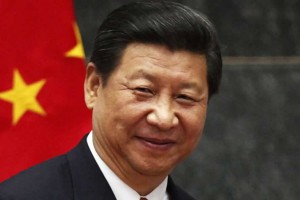
The Sunday Mail

Munetsi Madakufamba
Having followed European development models for many decades, the post-colonial state in Africa is yet to enjoy the promised benefits of development and effectively empower its citizens
However, China’s arrival on the global economic stage, with reforms that have enabled it to emerge as the largest economy in the world and extricate the larger part of its population from poverty in a record time of less than 30 years, has heightened the call for a rethink of Africa’s development model.
This has shown that it is possible for Africa to industrialise through an alternative model unique to the continent, a model that is not necessarily the same as that championed by Western proponents.
China and Africa are very different polities. China is a unitary state with more than a billion people, while Africa is a continent of 55 fragmented sovereign states.

Chinese president Xi Xinping
Yet, despite these differences, China and Africa share many commonalities of a historical, geographical and demographic nature, and more.
Africa’s combined population of 1,1 billion is almost the same size as that of China at 1,35 billion.
China, India and Africa are the three most populous regions of the world. These regions share a similar colonial history, having suffered from resource exploitation by imperial powers.
They suffered extreme poverty at the turn of the century, with China having turned its fortunes around and India moving in that direction, while the majority of states in Africa are still suffering from rising inequalities.
The success of China’s industrial development can be attributed to gradual and strategic economic liberalisation, an effective policy of FDI, incentives to both private and public sector enterprises, strategy of internationalisation for state-owned enterprises, research and development, and dynamic state institutions for policy guidance.
Success is driven by China’s strategic balance of protectionism and economic liberalism; China’s investment policy and the regional development policy; and export-oriented growth and foreign economic policy.
Two strong features of China’s rapid economic development are the investment-driven and export-oriented growth, based on the Chinese government’s ability to formulate an effective Industrial Development Policy while maintaining a favourable climate for foreign investment.
In order to attract FDI without threatening the growth of domestic industries, China adopted measures that include:
◆ Regional industrial policies and export promotion strategies;
◆ Development-oriented and sustainable FDI regimes that promote capital inflow, joint ventures between local firms and foreign investment; and
◆ Adoption of coherent strategies for special economic zones.
Since the 1980s, special economic zones were introduced in China through careful experimentation, notably starting in Guangdong Province where the remarkable story of Shenzhen was turned from what was once a fishing village into an ultra-modern industrial city.
This model has since been replicated over the last 35 years in other parts of China, turning the country from a previously agro-based economy into one that now derives about 90 percent of its income from industrial and service sectors. China is already supporting SEZs in African countries such as Egypt, Ethiopia, Mauritius, Nigeria and Zambia. There are some lessons that can be drawn and adapted from China’s development experience.
A growing industrial sector is key to the sustained overall economic development of a country due to the multiplier effect insofar as it promotes value addition and employment generation.
SEZs can be applied at many levels from city, provincial to national country level. Perhaps the one level that should be considered in China-Africa relations is extending this to the sub-regional level.
The SEZs already established in African countries should, therefore, incorporate a regional outlook, with impact on regional development.
The opportunity is further presented by the fact that for the first time in 2012, China and Africa through the Forum on China Africa Co-operation (Focac) noted the importance of relations between China and sub-regional organisations and agreed to cooperate to promote economic integration.
SEZs offer a good opportunity to push African industrialisation.
The global manufacturing centre has historically shifted from England in the last 200 years, to Germany in the last 100 years, to the United States since the 1940s, to Japan since the 1960s and 1970s, and now more recently to China.
All developing countries that have successfully made the transition from low-income to middle and high-income status such as China and the East Asian Tigers as well as Latin American countries have done so relying on a strong manufacturing sector as the driver of an export-oriented growth economy.
This has been achieved with a strong role for government, especially in the provision of infrastructure whose magnetic power has been most evident in China in attracting new industries and other forms of development.
Most African countries are still to break from the current consumption and commodity exports development path to a more sustainable development model based on industrial competitiveness.
China’s SEZ experience, therefore, offers a viable option if carefully designed with African characteristic.
◆ This article by the executive director of respected regional think tank, the Southern African Research and Documentation Centre (Sardc), through its Institute for China-Africa Studies in Southern Africa, is part of a series exploring the dimensions of China-Africa relations ahead of the Focac Summit in Johannesburg in December 2015.



